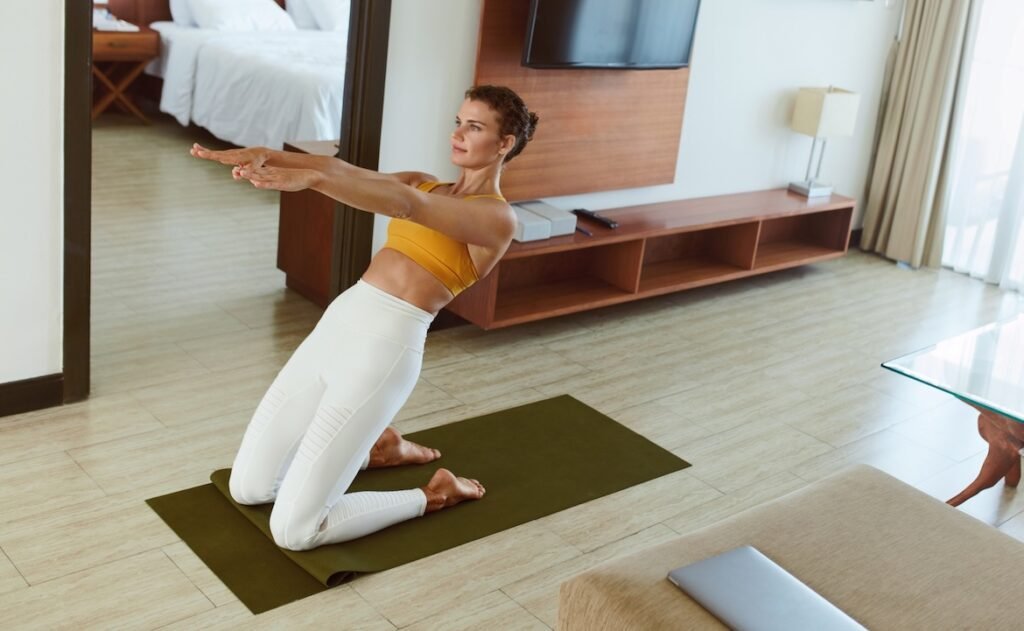IIf you hear the name “Norse” and your mind immediately thinks of tough-as-nails Vikings, you’re not alone. So if a workout has “Nordic” in the title, it must be effective, right? Enter: the reverse Nordic curl, aka the incline camel, a wacky exercise that hits your quads (and more) in all the right places. If you’re ready to try a new challenge, the reverse Nordic curl might be your choice.
So what exactly are reverse Nordic curls? Should you incorporate this into your strength training routine? Today, we’ll discuss all the benefits of this exercise and show you how to perform reverse Nordic curls to strengthen your quads and tendons.
Experts in this article
- Kevin Noel, DC, CSCS, Chiropractor, Certified Strength and Conditioning Specialist, Owner of LeverEdge Chiropractic
What is the Reverse Nordic Curl?
To define the reverse Nordic curl, we have to start with the regular Nordic curl. Nordic curls, or Nordic hamstring exercises (NHE), originated in Scandinavia to isolate and strengthen the hamstrings. Nordic curly hair has show1 Preventing hamstring injuries in athletes is an important part of physical training.
Regular Nordic curls are performed by kneeling, anchoring your feet under something, and leaning your torso forward to stimulate your hamstrings. Then you stand back up, keeping your back straight.
The reverse Nordic curl (also known as the tilted camel) is the opposite movement. Instead of leaning forward, you lean back—no anchoring required. It works your quadriceps, hip flexors and core muscles, and You can gain some huge potential benefits in terms of injury prevention.
“The main reason to incorporate Nordic curls into your training routine is for tendon health,” says Kevin Noel, CSCS, chiropractor and certified strength and conditioning specialist at LeverEdge Chiropractic.
Most of us probably don’t think about our tendon health when we hit the gym, but if you want to stay active and stay fit, strong tendons mean you can prevent serious injuries.
How to Perform Reverse Nordic Curls
- Start in a high kneeling position with your toes facing the ground (toes not curled).
- Slowly lower your body back, bringing your hips closer to your heels while maintaining a straight line between your knees, hips, and shoulders.
- The goal is to successfully engage your glutes into your heels, but move as far back as possible.
- Then, push your toes into the ground and use your quads and hip flexors to return to the starting position.
Noel says if you struggle with recurring knee injuries, start with a low dose and gradually increase the volume/rep range. “It is important to assess exercise tolerance before starting [doing] The production is huge,” he said.
Benefits of Reverse Nordic Curls
hard to mess up
With any new movement there’s a risk of doing it the wrong way, but the risk with reverse Nordic curls is much lower.
“The best thing about Nordic hamstring curls and Nordic reverse curls is that you can hardly make any mistakes while performing them,” says Noel. “This is because any deviation can actually be viewed as a slight regression or modification.”
Just consider a few precautions. “The only mistake you make is not properly warming up the involved tendons and muscles beforehand, which can lead to injury,” explains Noel. “Or jumping right into a movement without assessing your ability to fully repeat the movement.”
Easy to merge
Already have a training plan? You can easily incorporate reverse Nordic curls into your existing routine. Noel recommends adding them to any lower body and/or core class, depending on your training routine (upper body vs. lower body, etc.).
“While the exercises themselves may not be ‘easy,’ incorporating them into your daily routine should be a staple, especially for those who suffer from chronic hip flexor tightness or chronic low back pain,” he says .
How Many Reverse Nordic Curls Should You Do? “If someone is new to the sport, I recommend starting with smaller numbers with fewer sets, such as 3 to 6, and assessing tendon tolerance,” Noel says. Once a baseline is established, do as many reps as you want. Train in the same range. [your] Target.
Modification is very simple
What if you can’t do a reverse Nordic curl? Don’t worry! Modifying this action is easy.
“My favorite [adjustment] “The purpose of this move is to break the straight line between your knees, hips, and shoulders,” says Noel. “
Still too difficult? Noel recommends trying supine (lying on your back) leg raises or hanging leg raises.
Want to make it more intense? Place a weight plate against your chest for added strength training.
Injury prevention
As we mentioned before, one of the biggest benefits of reverse Nordic curls is that they strengthen tendons.
“All athletes, whether they are performing explosive, short-term movements or long-distance, high-endurance activities, can benefit from strong, healthy tendons,” Noel said. “Tendons are responsible for connecting the contractile part of the muscle to the bone. And in overuse injuries, they are often the first to be injured.
Exercise multiple muscles
Reverse Nordic Curl Activation similar muscles2 One-legged squats mainly exercise the quadriceps. You’ll also engage your core muscles as you maintain a straight line forward and back, making this a great ab exercise. The balance required when leaning back means you’re also using a lot of your smaller stabilizer muscles, and even your gluteal muscles, to stabilize your hips.
Well+Good articles reference scientific, reliable, up-to-date, and robust research to support the information we share. You can count on us on your health journey.
- Nunes H, Fernandez LG, Martins PN, Ferreira RM. Effects of Nordic hamstring exercise on lower extremity performance and injuries: an umbrella review. Healthcare (Basel). 2024;12(15):1462. Posted on July 23, 2024.
- Pereira NDS, Chaffe LP, Marques MI, et al. Reverse Nordic curls do not produce better eccentric activation of the quadriceps than bodyweight squat exercises. J Sports Rehabilitation. Released online on August 30, 2024.

